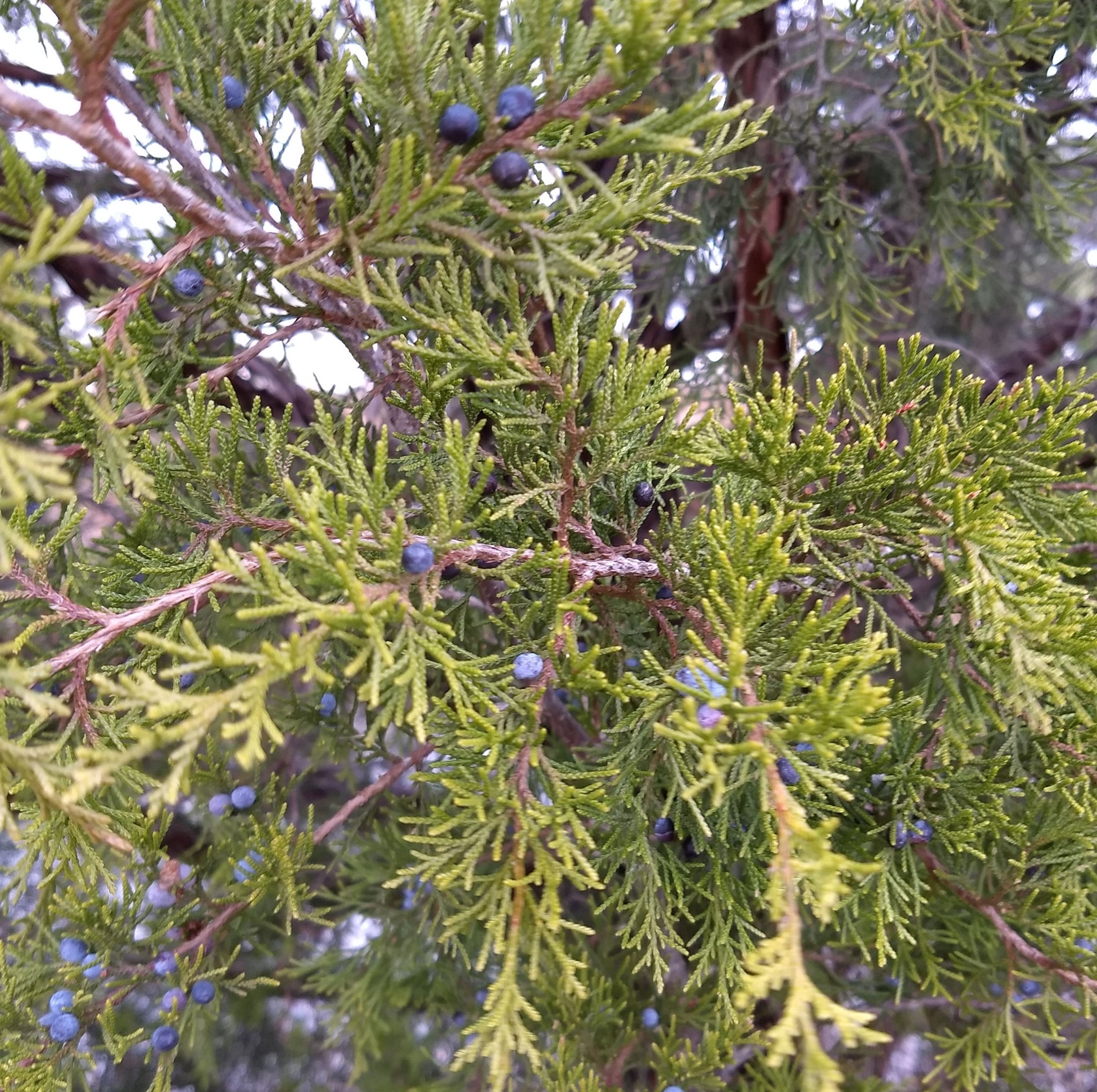Map Snapshot

























933 Records
Status
A pioneer tree in open areas, such as old fields and other cleared, abandoned land. Thrives in drought and cold, and grows well in rocky, sandy, or clay substrates. Can become invasive in grasslands, especially pasture lands. It can be extremely long lived. (For an overview of Eastern Red Cedar, see Johnson, 2016).
Description
A small- to medium-sized, evergreen tree, usually with a single stem. Commonly upright and columnar, but may be rounded and bushy. Usually dioecious, but sometimes monoecious. Leaves (needles) are of two forms: On young trees and sometimes on parts of lower branches of large trees, needles are narrow, long, and sharp-pointed, whereas older trees develop needles that are small, ovate or triangular, closely appressed and overlapping (not sharp pointed). Male cones are tiny and yellowish, often numerous. Young female cones are tiny, with spreading scales, greenish or purplish, and, by fall, at maturity, they are round, bluish, glaucous, and berrylike (Sibley, 2009). Bark is thin and shreddy.
Where To Find
"On dry soils and red clays, often abundant where calcareous in the Hagerstown valley. Also common on sand dunes and sandy soils, often quite near the shore line along the ocean and around the Bay" (Brown and Brown, 1972).
Relationships
Host to Cedar Apple Rust, Cedar Quince Rust, and the larval cases of Evergreen Bagworm Moth. Larval host of the Imperial Moth and Juniper Hairstreak butterfly.
Seed cones are an important food source for migrant and wintering birds.























